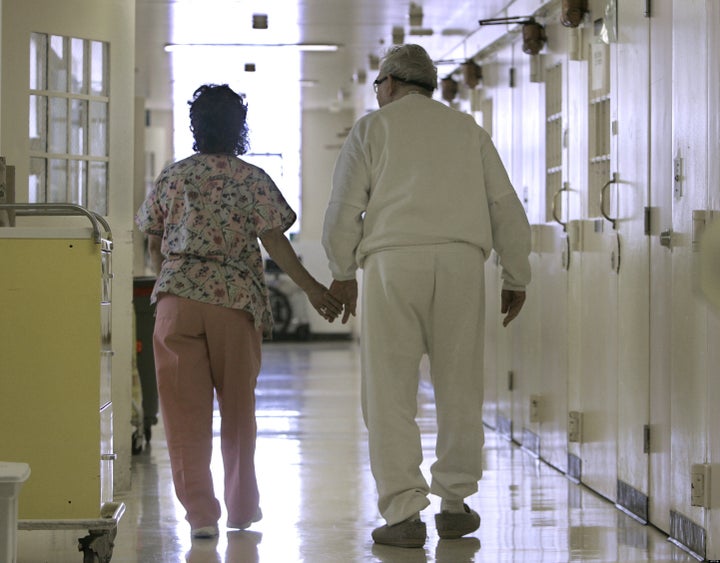
America's prisons aren't just overcrowded. They are rapidly graying. Why should we care? Because at $68,000 per prisoner, older adults in prison cost three times as much as their younger counterparts and with the older prisoner population now five times as large as it was in 1990, we can no longer afford to ignore this growing financial cost and hidden humanitarian crisis. Through my research, I've gathered narratives from a variety of sources, including from over 200 open-ended survey responses and letters from older adults in prison. While there are many complicated aspects to this issue, one thing is clear: These elderly prisoners aren't the only offenders. The system itself is an offender too. Perhaps the largest tragedy is that this exponential increase of older adults in prison is not due to a crime surge in that demographic but rather is the result of stricter sentencing laws passed in the midst of the 1980's tough on crime fervor. Laws such as "Three Strikes You're Out" and "Truth-In-Sentencing" gave crimes like drug offenses a maximum sentence of 30 years. Before these laws were passed, the maximum had been ten years. With these laws still on the books today, we are basically building into law an aging population that will only grow along with their costly health needs. No one is suggesting we go soft on crime. Individuals found guilty are and will continue to be held accountable for their crimes. But the older adult prison population is a highly vulnerable and neglected one. There are few professions and communities that can solely and adequately address their needs. As a society, it is essential that we uphold our ethical obligation to respect their inherent dignity and worth, while at the same time attending to societal concerns about public safety and accountability. But that's not what we're doing. Prisons are well known for their culture of violence, neglect, and overcrowding and are havens for gang activity. Older adults, because of their increasing frailty, are especially vulnerable to victimization in this environment. As one 62-year-old wrote to me, "It's very tough surviving prison. The provoking, the unnecessary treatment, verbal abuse, and violence only add to the original sentence term to be served. Little things begin to add [up] causing inmates to react in ways with custody staff or fellow prisoners. Overcrowded conditions, poor medical service, lack of interaction with Administrative Staff is stammering." Under these conditions, it isn't surprising then that older adults in prison can actually age at an accelerated rate. In fact, the elderly population in corrections is defined as aged 50 and above primarily because the typical 50-year-old inmate has the health status of a 65-year-old or older individual outside of prison. Over 3,000 older men and women will die each year in prison, even though they were not officially sentenced to death. But because of the lengthy sentences they received, they might as well have been. The effects of lengthy sentences and general prison culture aren't the only factors to take into account when assessing the needs of this population. Often, older prisoners have lived with the cumulative effects of a lifetime of untreated trauma as victims of family, community, and institutional abuse. One 50-year-old I surveyed remembered childhood family violence: "I was crippled when I was younger. My family member beat and molested me. I was tied to the basement poles beaten, always told over and over again you're a jail bird just like your father. This was so tightly put into my head it blurred everything I saw." Because of this history of untreated victimization, older prisoners are at an increased risk of adverse health and mental health consequences, such as depression, PTSD, and cognitive impairment that today, the correctional system is not adequately equipped to address. While there are some geriatric specific programs, such as the True Grit Program in Nevada Corrections, these programs are far and few in between and little research has been done to assess their actual effectiveness. With the elderly prison population expected only to increase, these few existing programs will be less and less able to address their needs. As Eleanor Roosevelt so aptly said, "Justice cannot be for one side alone, but must be for both." When looking beyond the mugshot to the bigger picture, mounting evidence suggests that older adult offenders are also the victims of abuse and neglect vis a vis our prison system. The time to take action is now, both for our societal mores and our collective pocketbook.